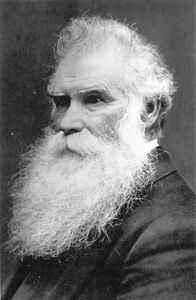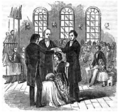Portal:Latter Day Saint movement
|
Welcome to the portal of The Latter Day Saint movement
Introduction The Latter Day Saint movement (also called the LDS movement, LDS restorationist movement, or Smith–Rigdon movement) is the collection of independent church groups that trace their origins to a Christian Restorationist movement founded by Joseph Smith in the late 1820s. Collectively, these churches have over 17 million nominal members, including over 17 million belonging to the Church of Jesus Christ of Latter-day Saints (LDS Church), 250,000 in Community of Christ, and several other denominations with memberships generally ranging in the thousands of members. The predominant theology of the churches in the movement is Mormonism, which sees itself as restoring again on Earth the early Christian church; their members are most commonly known as Mormons. An additional doctrine of the church allows for prophets to receive and publish modern-day revelations. A minority of Latter Day Saint adherents, such as members of Community of Christ, have been influenced by Protestant theologies while maintaining certain distinctive beliefs and practices including continuing revelation, an open canon of scripture and building temples. Other groups include the Remnant Church of Jesus Christ of Latter Day Saints, which supports lineal succession of leadership from Smith's descendants, and the more controversial Fundamentalist Church of Jesus Christ of Latter-Day Saints, which defends the practice of polygamy. One source estimated over 400 denominations have sprung from founder Joseph Smith's original movement. (Full article...) General images -The following are images from various Latter Day Saint movement-related articles on Wikipedia.
Selected articleIn Christian theology, baptism with the Holy Spirit, also called baptism in the Holy Spirit or baptism in the Holy Ghost, has been interpreted by different Christian denominations and traditions in a variety of ways due to differences in the doctrines of salvation and ecclesiology. It is frequently associated with incorporation into the Christian Church, the bestowal of spiritual gifts, and empowerment for Christian ministry. Spirit baptism has been variously defined as part of the sacraments of initiation into the church, as being synonymous with regeneration, or as being synonymous with Christian perfection. The term baptism with the Holy Spirit originates in the New Testament, and all Christian traditions accept it as a theological concept. Prior to the 18th century, most denominations believed that Christians received the baptism with the Holy Spirit either upon conversion and regeneration or through rites of Christian initiation, such as water baptism and confirmation. (Full article...) Selected locationVoree (/vɔːriː/) is an unincorporated community in the Town of Spring Prairie in Walworth County, Wisconsin, United States. It is best known as the headquarters of the Church of Jesus Christ of Latter Day Saints (Strangite), a denomination of the Latter Day Saint movement. According to James Strang, founder of the Strangite church and of the town, the name means "Garden of Peace". The community is situated along former Wisconsin Highway 11, just west of the Racine County line. (Full article...)
Selected schismatic historiesThe Pure Church of Christ was the first known schismatic organization to emerge within the Latter Day Saint movement (LDS). The Pure Church of Christ was organized in 1831 in Kirtland, Ohio by Wycam Clark, Northrop Sweet, and four others who claimed that LDS founder Joseph Smith was a false prophet. They had a few meetings and soon disbanded. According to speeches made by George A. Smith that were recorded in the LDS Journal of Discourses, this church never had more than six members. (Full article...) OutlinesRelated portalsKey biographiesWilliam Bickerton (January 15, 1815 – February 17, 1905) was a leader in the Latter Day Saint movement after the 1844 succession crisis. In 1862, Bickerton became the founding president of the church now known as The Church of Jesus Christ (Bickertonite), which is one of many churches that claim to be a continuation of the Church of Christ founded by Joseph Smith Jr in 1830. (Full article...)
Selected image The "Letter of appointment" is a controversial three-page document used by James J. Strang and his adherents in their efforts to prove that he was the designated successor to Joseph Smith as the prophet and president of the Church of Jesus Christ of Latter Day Saints. Sent from Nauvoo, Illinois, on June 19, 1844, to Strang in Burlington, Wisconsin, this letter served as the cornerstone of Strang's claims, which were ultimately rejected by the majority of Latter Day Saints.
Did you know (auto generated)
Selected Anniversaries
Selected quote
TopicsFeatured contentCategoriesWikiProjectsAssociated WikimediaThe following Wikimedia Foundation sister projects provide more on this subject:
Discover Wikipedia using portals | ||||||||||






































